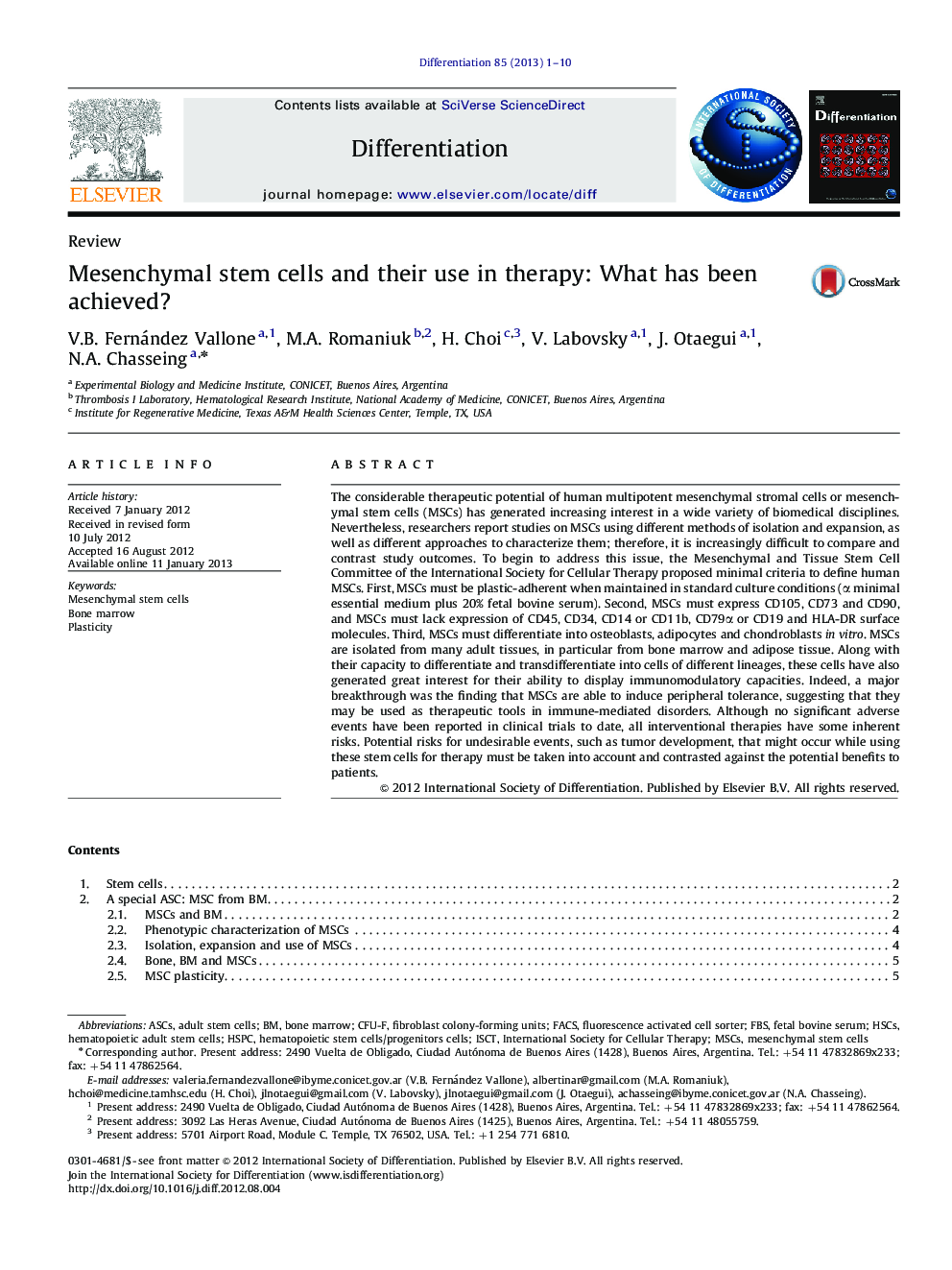| Article ID | Journal | Published Year | Pages | File Type |
|---|---|---|---|---|
| 2119528 | Differentiation | 2013 | 10 Pages |
The considerable therapeutic potential of human multipotent mesenchymal stromal cells or mesenchymal stem cells (MSCs) has generated increasing interest in a wide variety of biomedical disciplines. Nevertheless, researchers report studies on MSCs using different methods of isolation and expansion, as well as different approaches to characterize them; therefore, it is increasingly difficult to compare and contrast study outcomes. To begin to address this issue, the Mesenchymal and Tissue Stem Cell Committee of the International Society for Cellular Therapy proposed minimal criteria to define human MSCs. First, MSCs must be plastic-adherent when maintained in standard culture conditions (α minimal essential medium plus 20% fetal bovine serum). Second, MSCs must express CD105, CD73 and CD90, and MSCs must lack expression of CD45, CD34, CD14 or CD11b, CD79α or CD19 and HLA-DR surface molecules. Third, MSCs must differentiate into osteoblasts, adipocytes and chondroblasts in vitro. MSCs are isolated from many adult tissues, in particular from bone marrow and adipose tissue. Along with their capacity to differentiate and transdifferentiate into cells of different lineages, these cells have also generated great interest for their ability to display immunomodulatory capacities. Indeed, a major breakthrough was the finding that MSCs are able to induce peripheral tolerance, suggesting that they may be used as therapeutic tools in immune-mediated disorders. Although no significant adverse events have been reported in clinical trials to date, all interventional therapies have some inherent risks. Potential risks for undesirable events, such as tumor development, that might occur while using these stem cells for therapy must be taken into account and contrasted against the potential benefits to patients.
